A cell phone in a waterproof pouch might have made the difference. Or if he’d chosen his paddleboard that day, rather than the sit-inside kayak that filled with water when capsized. Perhaps if the wind had been calm or the current hadn’t been running so strongly, David Schink would have come home cheerful and energized, as he did almost every day after paddling. Instead, the kayaker went missing with barely a trace.
The what-ifs scroll through Judy Schink’s mind when she thinks back to the February day her husband of 38 years hustled out the door to look for dolphins in Destin, Florida, a seaside community built around a protected bay and a narrow pass to the Gulf of Mexico that is notorious for strong tidal currents.
“He didn’t say goodbye,” Judy recalls. “He said ‘See you later—we’ll go for a walk when I get back.’”
Mistakes Seal Sad Fate of Missing Kayaker
David Schink was no rookie paddler, Judy says. One of their first purchases as a couple was a canoe, and they spent summers at a lake house in Minnesota, paddling, sailing and water skiing with their three boys. David ran marathons and triathlons. He swam competitively in college and once rode his bicycle across Minnesota. At 61 he’d lost little of his athlete’s endurance and none of his enthusiasm for the water.
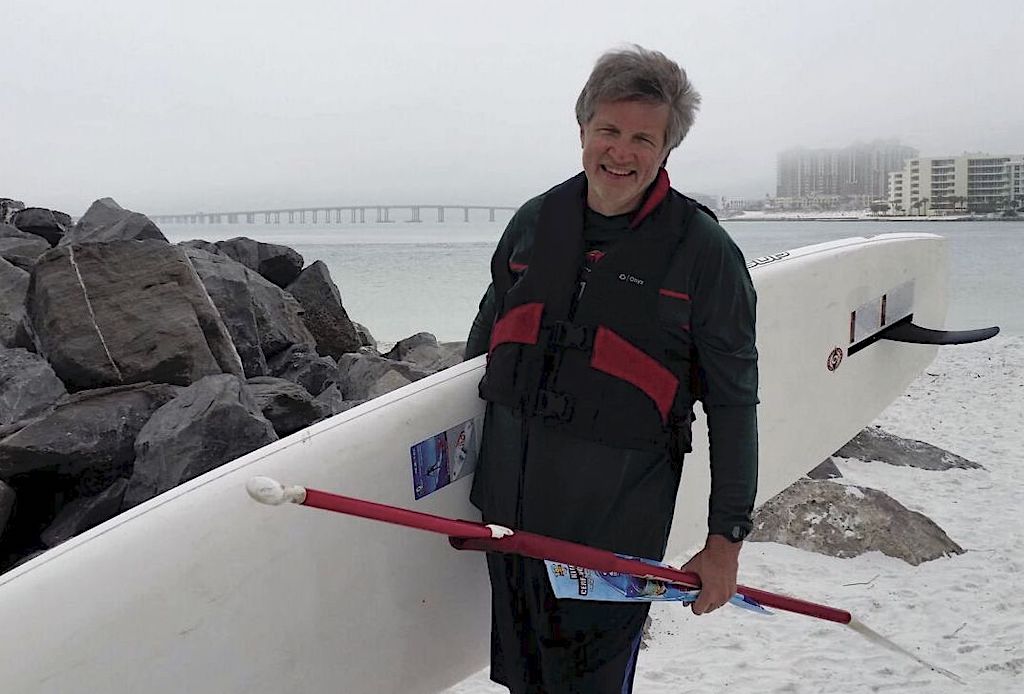
“He absolutely loved to paddle board every single day,” Judy says. “He was 6’5″ and he would pick up the paddleboard and carry it around like it was nothing. He just was exuberant when he was on the water, and he was so big and powerful I think he felt he could muscle his way out of anything.” It wasn’t unusual for David to be out after dark. At home in Minnesota, he loved to watch the sunset from the Mississippi and paddle home after dusk on the glassy water.
The couple began traveling to Florida six years ago, escaping the Minnesota winters with Judy’s mother, who has cold-induced asthma. They stayed in a condo a few steps from beach and paddled together most days, David on his paddleboard and Judy in a 10-foot sit-inside kayak. Sometimes, though, David would paddle alone, and on those occasions he liked to stretch his horizons. A week or so before he disappeared, a fishing boat stopped to check on him about a mile offshore, Judy says. “I remember when he came back to me, he said ‘That was a good workout.’”
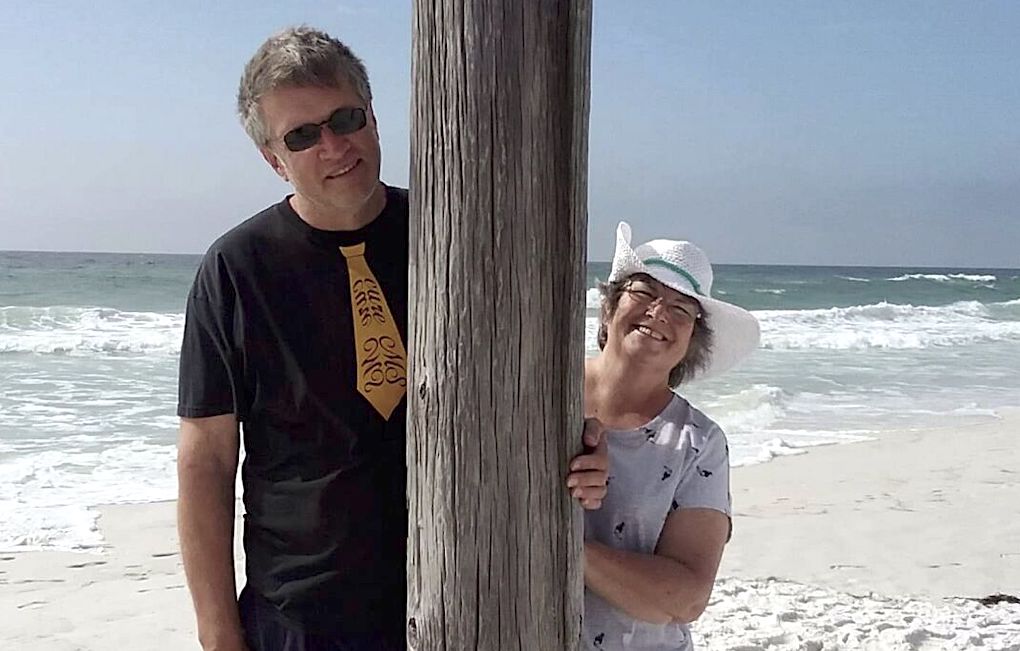
February 13 was a Saturday, and David left to go paddling earlier than usual, about 2:30 in the afternoon. He didn’t tell Judy precisely where he was going, and he didn’t take his cell phone because he didn’t want to risk getting it wet. He threw on a lightweight jacket and carried the kayak and his paddle to the water. As usual, he wore his life jacket. No one saw him launch, and Judy still isn’t sure where he went that day. She only knows that he didn’t come back.
Around sunset Judy and her sister went looking for David, Judy walking the beach along the Gulf shore and her sister searching the bay side. They called the Coast Guard when they returned, at about 7 p.m. that evening. Authorities initiated a search, but were hampered by the lack of information. “Nobody saw him launch, and we never were able to determine that night where he launched the kayak or where he went,” said Lt. Brian Parkton of the Okaloosa County Sheriff’s Department.
Wherever David was, he was alone with no way of calling for help.
If either of those factors had been different—if David had been carrying a cell phone or handheld VHF, or if he’d been paddling with one or more other paddlers—the outcome may have been different. And if he’d been using his paddleboard or a kayak better suited to open water, it’s possible he would have survived.
Another incident leads to different outcome
A remarkably similar kayaking incident in nearby Panama City illustrates the importance of these factors, and may shed some light on David’s last hours. Alex Ochoa and David Rose have much in common with David Shink. Ochoa is an athletic 60-year-old, and Rose is an avid recreational paddler. The pair went out on a windy day in Panama City, through a pass known for strong tidal currents. And as David often did, they encountered dolphins in the Gulf.
The men lost themselves in the moment, says Paul Barnard, the boating safety officer for the U.S. Coast Guard’s Heartland District, who wrote a compelling account of the incident. When the dolphins left, the duo realized that despite paddling hard into the headwind for 15 minutes, they were farther from shore than when they’d started. “The wind had picked up and was now howling,” Barnard wrote. “They dug in and started paddling against the forceful flow of the water boiling out of the pass.”
The search continued for 49 hours and covered more than 12,000 square miles. David was never found.
They became separated as Rose battled his way to the shore of a barrier island, dragged his kayak to the bay side and then ferried across the ripping current in the pass to reach his truck, where he’d left his cell phone. The effort covered about a mile of distance and consumed more than 90 minutes.
Ochoa in the meantime had lasted about 10 minutes before a rogue wave toppled his kayak. Like David’s kayak, the inexpensive craft was small and slow—no match for the conditions in the Gulf that day. But unlike David’s sit-inside kayak, Ochoa’s was a sit-on-top. It didn’t fill with water when it capsized, and Ochoa was able to scramble back aboard. He didn’t trust himself to stay upright in the heavy chop, so he lay on his belly and paddled with his arms like a surfer, promising himself again and again, “I am not going to quit.”
Rescuers responding to Rose’s 911 call searched for nearly two hours before spotting Ochoa three miles offshore, just minutes before darkness fell. The near escape illustrates the importance of a timely distress call, and the multiple factors stacked against David Schink.
In both cases, the paddlers underestimated the risk of short, seemingly routine outings. They didn’t leave a float plan despite challenging conditions, and none of the three brought their cell phones with them for fear of getting them wet, says Barnard, who is an avid kayaker himself.
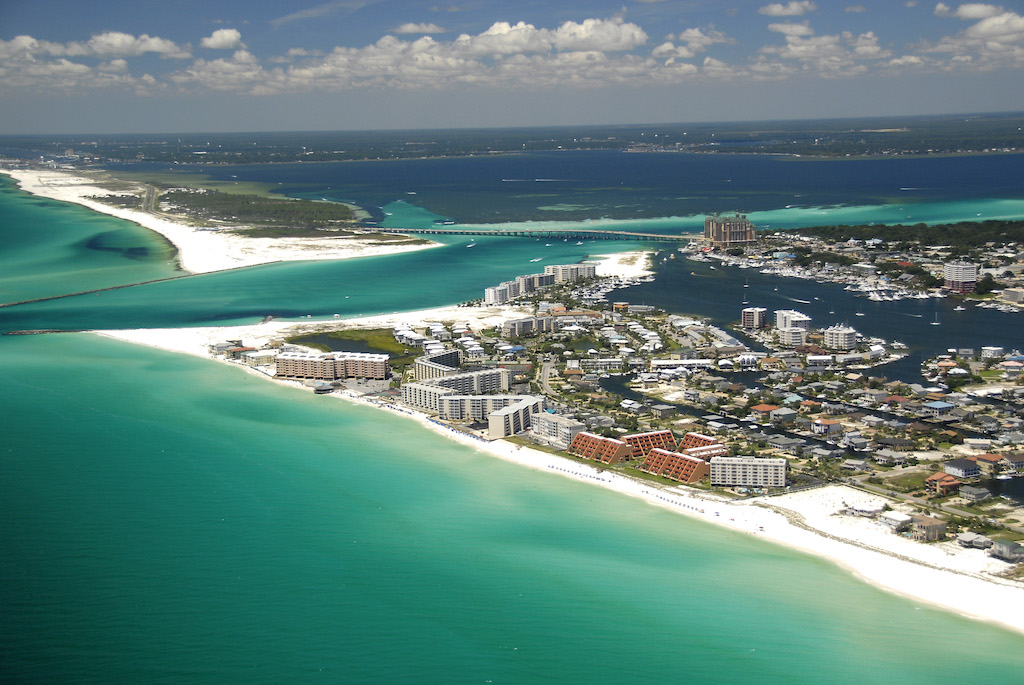
Communication is key in emergencies
“There are very simple ways to protect cell phones and you simply cannot go on a voyage in or near open water without the means to communicate a potential emergency,” he says. The dramatic rescue last summer of a 17-year-old paddleboarder who called rescuers after being swept offshore attests to the value of a cell phone in an inexpensive waterproof case.
Barnard recommends a layered communications strategy incorporating both a cell phone and a handheld VHF radio. Every paddler should also carry a ditch bag with a few essential items for safety, survival and signalling. Barnard carries a personal locator beacon (PLB) capable of sending a distress signal and tracking his location to rescuers anywhere in the world.
Barnard also stresses the importance of a timely response, which could have been facilitated if David had left a detailed float plan with Judy. That wasn’t his habit though, and because he frequently stayed out after sunset she didn’t notify authorities right away.
Weather and darkness complicated the search. Coast Guard and local authorities were also hampered by lack of information about David’s planned route. Because they didn’t know whether he’d stayed within the protected bay or gone out through the pass, they searched both areas. The Okaloosa Sheriff’s Department searched the harbor and pass using drones equipped with thermal night vision. The Coast Guard deployed a patrol boat, helicopter and search plane, in addition to the 87-foot cutter Albacore.
“He didn’t say goodbye. He said ‘See you later—we’ll go for a walk when I get back.’” — Judy Schink
“Every Coast Guard SAR [Search and Rescue] controller you talk to will say it’s better to involve us early in the process than later,” Barnard says. “Even if there’s still some uncertainty in your mind, go ahead and share that uncertainty with us and we will begin the process of sorting out whether we need to gather some more information or whether we need to roll.”
When daylight finally came Sunday morning the area was covered in heavy fog. Word went out to the local fishing fleet to look for the missing kayaker, but in the poor weather only four boats responded.
The Coast Guard eventually located David’s kayak in the Gulf that afternoon, some 20 miles southwest of Destin. It was full of water, and one half of the two-piece paddle was wedged purposefully in the cockpit. Judy believes the paddle may have broken or come apart as David paddled for shore. The Coast Guard continued searching for David, who was wearing a life jacket and could have survived up to 40 hours in the approximately 65-degree water. The search continued for 49 hours and eventually covered more than 12,000 square miles. David was never found.
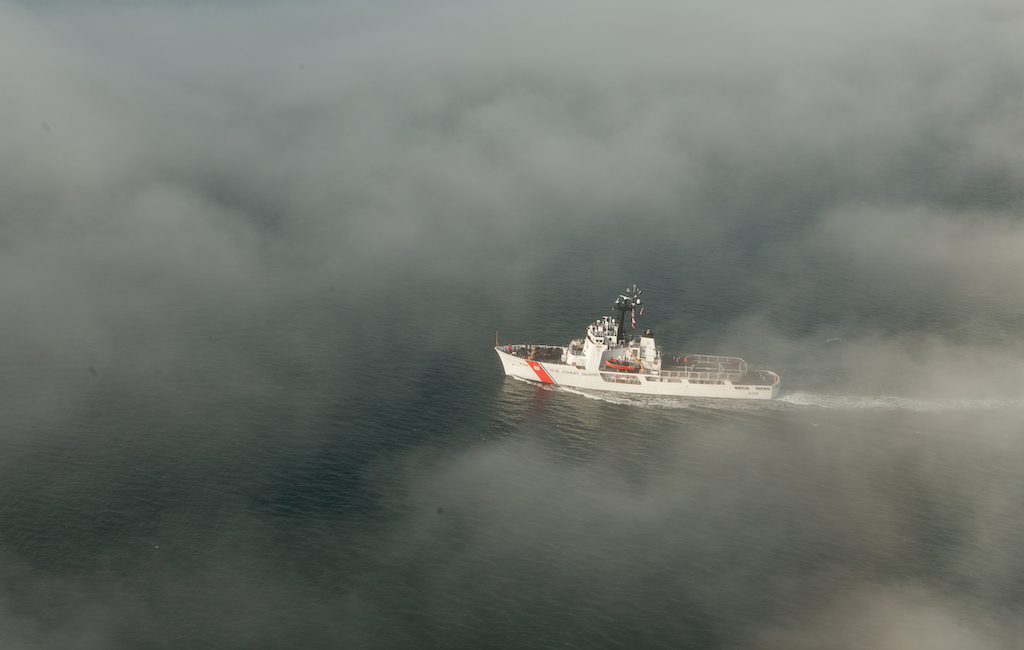
Aqua Alert offers hope for boaters
Judy Schink knows there’s nothing she can do now to bring David back, but she’s determined that his death not be in vain. “I will do whatever I can to make sure this doesn’t happen to others,” she says.
As she wrestles with the what-ifs of her husband’s disappearance, one stays with her: What if there were an Amber Alert for boaters—a way to notify all boaters instantly when a fellow mariner is missing or in need of assistance? Judy and her grown sons have taken the concept and run with it, networking with the Coast Guard’s Barnard, the mayor of Destin and other officials to develop what they are calling the “Aqua Alert.”
Barnard says the Coast Guard has been exploring a similar concept using a phone app that transmits the agency’s urgent marine information broadcasts—the alerts that go out to mariners on VHF Channel 16—via cellular networks. That could make a real difference, says Barnard, who estimates that only about half of the boats in U.S. waters are equipped with VHF radios, and that of those, even fewer are switched on and tuned to Channel 16 with someone listening. But these days most people have a cell phone in their pocket, even when they’re out boating.
Don’t be the next missing kayaker
An Aqua Alert system could make boating safer for people in every type of craft, from kayaks to oceangoing vessels. The most powerful lesson paddlers can take from David Schink’s disappearance, and Alex Ochoa’s narrow escape, are also the simplest: Never paddle alone. Leave a float plan with friends or loved ones. Know the limits of your boat and gear. And always carry the means to call for help.
David Schink with his paddleboard on the beach in Destin, Florida where he paddled most days. | Feature photo: Courtesy Judy Schink



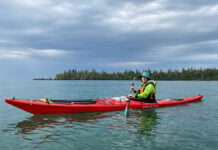
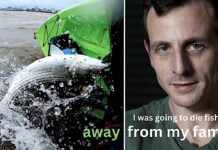
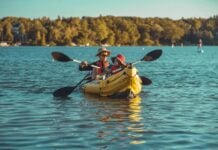
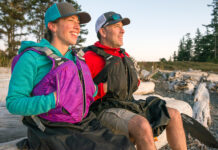
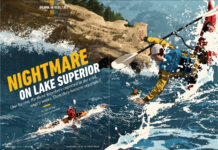

There is no such thing as a casual or routine trip into nature. Always go prepared for the worse and you’ll probably come home.
My heart goes out to Judy and the rest of David’s family in this tragedy.
As a sea kayak instructor/guide I bristle at the suggestion that a paddle board or sit on top is safer than a sit in kayak. These craft have been paddled (solo) across oceans. The elephant in the room, however, is “secure and adequate buoyancy fore and aft”. This is a basic requirement for any kayak that’s going to be taken anywhere farther from shore than you plan to swim. Considering the well documented possibility of being blown offshore I would suggest that should not be in any body of water bigger than an Olympic swimming pool. The definition is that, even fully swamped, the boat should float level and high enough that the cockpit can be pumped out, even in rough seas.
This is commonly achieved with either a hatch/bulkhead system, or float bags (and in rough conditions, also a spray skirt). Like any safety feature it also requires a little maintenance to ensure it is still functional. It is criminal that kayaks are produced and sold without any regard for this basic safety feature. The fact that “kayaks” are being sold in hardware, grocery stores and pharmacies says a lot about the unfortunate state of this industry.
I personally never go out without a pfd, spare paddle, pump, VHF, whistle, and flares, as well as a waterproof headlamp if I expect to be out within an hour of sunset. I consider that basic equipment. Of course, solid paddling and capsize recovery skills are also essential. As for solo paddling, yes it has more risks, and so it requires more careful planning/risk assessment, but I’ve paddled thousands of miles that way, on the west coast of Vancouver Island, Baffin Island and elsewhere. I obviously disagree that it should never be done, but it should only be done by people who are qualified and prepared.
thank you for shearing the above story made stop and think how important it is to think safety in all paddling expeditions big or small as you all said above think safety 1st priority thanks again for your wonderful article and all you do for the paddling lovers my name is ken hillier i haven’t got paddling magazine lately please let me know status on if my dues is paid or not thanks again for all you do for us paddlers sincerly ken hillier
The problem with some sit in kayaks is that the cheaper ones don’t have a closed hatch in both front and back, so they get hit by a big wave, and the front will fill with water, and it sinks front downwards – pretty well impossible to raise then, especially in a big wind. Thanks for the reminder to take emerg. equipment – I had a capsize on my first trip this summer, and it was in shallow water – but I hadn’t brought clothes with me. Thank goodness I was wearing a wet suit and a dry suit jacket – I didn’t get cold and was fine, but I realize the story could have been different because I was not properly equipped.
Very tragic. Sit in kayaks on open water need to carry additional safety gear. A must have is a spray deck cover to fully cover the deck and not allow waves to enter the water. A spare paddle, skills to re-enter the kayak with the gear needed. Emergency communication method/s. A float plan. A spare paddle. A 2 hr capsize and re-entry lesson from and experienced instructor would have prevented this tragic accident. A follow up lesson in rougher conditions helps too. Never paddle alone is a bit harsh. Never paddle alone without the above precautions is a better statement. I have been an instructor for over 25 years in the PNW, the above tips will save your life!
Andy Murray, Kayaking alone should never be done, even by people who are experienced, qualified and well prepared for any eventuality. The ocean can and has overwhelmed very experienced and well trained kayakers.